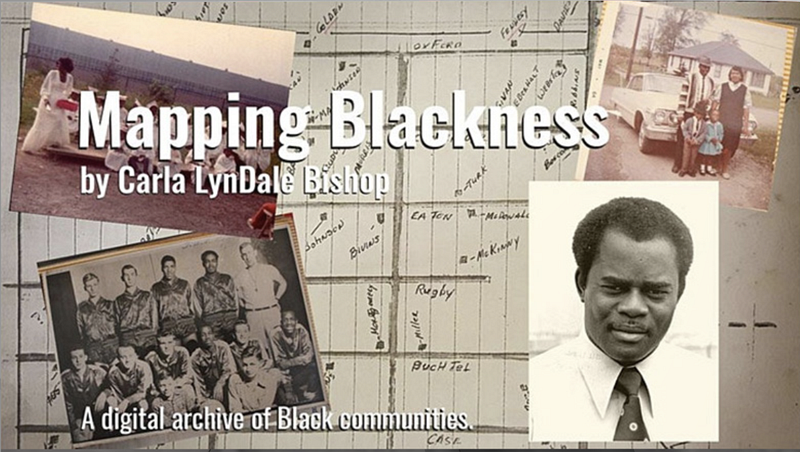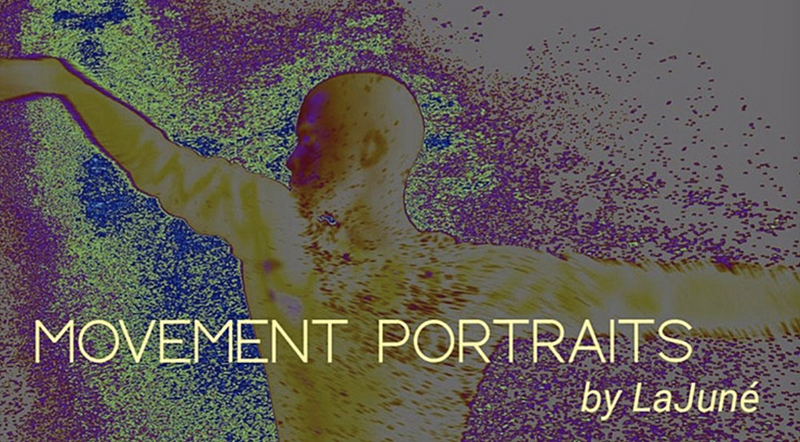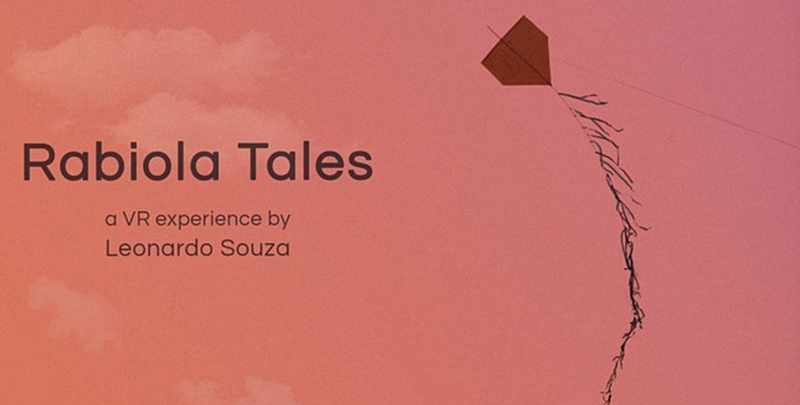
A dispatch from the new VR/AR/XR section of Black Public Media’s annual PitchBLACK Forum
While my peers complain of Zoom fatigue and organizations hatch plans for getting back to a decidedly dysfunctional “normal,” I am fully appreciating my unprecedented access to just about everything as a result of the pandemic. Yes, it has been a year of online work and events for which my eyes, lower back, and social life have suffered. Still, I am not mad because online events have opened the world to me in ways that did not exist before quarantine.
In-person iterations of film festivals, conferences, and forums are not always feasible for me. Thanks to pandemic-era norms of holding hybrid or virtual events, I have attended more conferences, film festivals, workshops, and classes this year than ever before, all while saving my vital resources. For many of us, the pandemic sparked deeper contemplation about what true access and representation look like in motion. Artists are tackling access-related challenges in their work with renewed vigor.
Last month, Black Public Media’s (BPM) inaugural BPMplus Showcase was the bright spot on my ever-growing roster of virtual events. Black Public Media is a non-profit organization that supports, develops, and distributes content that centers African American and global Black perspectives. Now in its fourth year, BPM’s PitchBLACK Forum is a competition for makers to secure funding to take their projects to the next level. This year, BPM awarded $410,000, the highest amount ever, to five creative teams competing in the Forum. I was able to attend the event for the first time thanks to the new online iteration. Prior to 2020, PitchBLACK was a physical event in New York City.
BPMplus Showcase is a special section of the Forum dedicated to projects using emerging technologies such as artificial intelligence, augmented reality (AR), virtual reality (VR), and mixed reality (XR). I am a Black maker who recognizes the value that emerging technologies can bring to traditional forms like film, but I feel out of my depth when exploring new technologies. Rarely do I find tech-centered spaces where I feel represented as a Black woman, but virtual BPMplus granted me access to such a space and liberated me from my own preoccupations about belonging.
Moderated by Lisa Osborne, BPM’s Director of Emerging Media, BPMplus Showcase was hosted on Hopin, a virtual event platform. Six creators participated in the showcase: Carla LynDale Bishop, LaJuné McMillian, Fabiano Mixo, Bayaté Ross Smith, Tamara Shogaolu, and Leonardo Souza. The artists pitched their projects to a virtual audience that included filmmakers, emerging technology entrepreneurs, distributors, press, and potential funders.
Creators were allotted approximately 20 minutes to pitch their individual projects, and each pitch commenced with a 3–5-minute video, which provided attendees with a sneak peek behind the scenes. Through the videos, creators demonstrated their chosen technologies, highlighted the communities in which they work, expounded on their missions, and showcased user interfaces and experiences. Because the showcase aims to connect makers with funders and supporters, participants also shared budgets and project needs, hashtags, and contact information. Osborne conducted brief interviews with creators after each screening. Attendees shared reactions and questions for directors in the chat, and Osborne weaved audience questions into her interviews. Viewers inquired about everything from project hosting locations, roles of project participants, and curriculum pieces for educational institutions to project packaging and storing practices. In addition to questions, audience members affirmed their enthusiasm for their favorite projects by dropping encouraging notes and leads for potential support into the chat box.
Across the presentations, three projects particularly resonated with my ruminations on Black access and representation in digital spaces.
 Four archival photographs are
overlaid on top of a hand-drawn map, along with text that reads “Mapping Blackness by Carla LynDale
Bishop” and “A digital archive of Black communities.” https://vimeo.com/536590273 (Black Public Media)
Four archival photographs are
overlaid on top of a hand-drawn map, along with text that reads “Mapping Blackness by Carla LynDale
Bishop” and “A digital archive of Black communities.” https://vimeo.com/536590273 (Black Public Media)
Currently in pre-production, “Mapping Blackness” is a digital archive of historically Black communities by filmmaker and educator Carla LynDale Bishop. Last year, Bishop was named the inaugural recipient of the MIT Open Doc Lab and Black Public Media Fellowship. Through her work, Bishop uses an intergenerational approach to teach Black youth to document their communities’ vital histories. Young people learn documentary filmmaking and research skills in order to interview elders in their neighborhoods. From these interviews, students create film and interactive media elements to embed into digital maps, which viewers can access through a website or mobile app. The archive utilizes a combination of augmented reality, 3-D images, 360 virtual reality, geo-tagging, and filmmaking to preserve and highlight communities that might otherwise go overlooked.
The most striking elements of the archive are its 3-D and VR renderings of landmarks and spaces that no longer exist. Through these renderings, audiences can explore spaces that are central to collective memory. Bishop seeks to connect Black communities across America by making this archive widely accessible. Her goal is to create a curriculum that will teach families and communities how to record and submit their own stories to the platform, thus scaling the project.
 This still depicts a photo
inverted image of a dancer with the title “Movement Portraits by LaJuné.” https://vimeo.com/536617639 (Black Public Media)
This still depicts a photo
inverted image of a dancer with the title “Movement Portraits by LaJuné.” https://vimeo.com/536617639 (Black Public Media)
LaJuné McMillian’s “Movement Portraits” explores Black joy and creation through motion-capture recordings of Black people as they dance and engage in physical improvisations. Through this work, McMillian aims to build a collection of diverse characters and movements that fill the void created by systems and repositories that consistently erase Black culture and influence. McMillian sees the Black Movement Library as a solution to the aforementioned challenges. The Library will be an online database of character-based models and motion capture data that includes information on performers and the histories of their movements. Performances are documented through motion capture and Unreal Engine, and performers are interviewed.
“Interviews are embedded into the soundscapes that performers move to, allowing the audience to dive into their lives and learn more about how Black movement has been used as a tool for the preservation of Black culture as well as a vehicle of self-evolution,” McMillian said.
Though movement portraits are real-time motion capture performances, McMillian intends to create single-channel video and virtual reality experiences as well. At present, two of the five portraits are completed. McMillian’s work centers Black identities by ensuring that Black performers are properly credited and foregrounded as they create intellectual property for the digital sphere.
 A pentagonal kite with many
tassels drifts in the wind in a dusky sky. “Rabiola Tales, a VR experience by Leonardo Souza.” https://vimeo.com/536581158 (Black Public Media)
A pentagonal kite with many
tassels drifts in the wind in a dusky sky. “Rabiola Tales, a VR experience by Leonardo Souza.” https://vimeo.com/536581158 (Black Public Media)
Brazilian filmmaker and BPMplus Fellow Leonardo Souza’s “Rabiola Tales” is an animated 3-D virtual reality project that uses a fictional kite shop in a Rio de Janeiro favela as a point of departure for the exploration of the community. Souza created the project to counter the negative portrayals of favela life in popular media. Users will visit the kite shop and meet the storeowner, Paolo, who will teach them to fly kites. Users are then transported to a rooftop to fly their kites through VR controllers. The sky is full of other kites, which are controlled by artificial intelligence, and users will be able to interact with those kites.
“I have always been fascinated by flying kites, “ Souza says. “It could be that feeling that I was flying, or maybe because the sky full of kites is just like a server hosting a multi-player game. It was my internet before I knew the internet.”
Souza intends to share his project with middle and high schoolers in Brazil to facilitate access to VR. The 360VR version and VR workshopping of “Rabiola Tales” are complete and available in Portuguese with option for translations, and a more interactive version for the Oculus Quest 2 is in pre-production.
As Lisa Osborne noted, “It is vitally important that Black creators have the means and support to try new software, hardware, and concepts in computing when these technologies are still in their experimental phase. Black talent needs access when the technology is still messy, when it is not stable.”
Indeed, early access provides fertile ground for true learning and experimentation. These compelling projects will shift the prevailing narratives for their respective communities, participants, and makers, while, at the same time, diversifying emerging technology spaces in invaluable ways.
April Dobbins is a writer and filmmaker based in Miami.
For more news, discourse, and resources on immersive and emerging forms of nonfiction media, sign up for our monthly newsletter.
Immerse is an initiative of the MIT Open DocLab and receives funding from Just Films | Ford Foundation and the MacArthur Foundation. The Gotham Film & Media Institute is our fiscal sponsor. Learn more here. We are committed to exploring and showcasing emerging nonfiction projects that push the boundaries of media and tackle issues of social justice — and rely on friends like you to sustain ourselves and grow. Join us by making a gift today.